| After hitchhiking from Chicago, young George Eastman arrives at the Eastman bathing suit factory and arranges to visit his uncle Charles, the company's president, at his home that evening. Charles, a tycoon who recently met his nephew for the first time, introduces George to his wife Louise, daughter Marsha and son Earl. The Eastmans gingerly question George about his widowed mother Hannah, a religious mission worker in Chicago, and George, keenly aware of his lowly social position, responds with vague politeness. After Charles insists that Earl, who has a management position at the factory, find a job for his cousin, debutante Angela Vickers enters the room, mesmerizing George with her beauty. The next day at the factory, the condescending Earl assigns George to the assembly area, where the bathing suits are put into boxes, and advises him about the strict rules against dating fellow employees. George works tirelessly and at night in his modest apartment, and composes a list of suggestions for improving productivity on the assembly benches. Yearning to succeed, George drives to the Eastmans' during one of their lavish parties and sees Angela arriving, but cannot bring himself to go inside. Instead, he goes to a movie and ends up sitting next to co-worker Alice Tripp. After the movie, George and Alice walk together, and she comments that George will always be different because he is an Eastman. The uneducated George maintains that he is not special and becomes momentarily lost in thought when he notices a boy singing in a sidewalk mission group. George then asks Alice about her life, and she reveals that she came from a poor family and, ironically, never learned how to swim. Outside Alice's furnished room, George and Alice kiss and agree to see each other again. Later, at the end of another date, the couple wind up in Alice's room and spend the night together. The next morning at the factory, Charles comes through the assembly area and, seeing George, offers to promote him and invites him to another party. When Alice learns that the party coincides with George's birthday, she reminds him that she had already planned a party for him and insists that he leave the Eastmans' early. At the Eastmans', George feels out of place and seeks refuge in the deserted billiard room. While playing pool by himself, George is noticed by Angela, and the two strike up a friendly conversation. Just then, Charles bursts in and insists that George call his mother about his promotion. Though embarrassed, George complies, while Angela hangs on his arm, teasing him. George and Angela spend a few romantic hours dancing and, when George finally shows up at Alice's, she is angry and informs him that she is pregnant. Though stunned, George reassures her, but later accepts Angela's invitation to a party at her parents' house. There, George and Angela confess their love, and George frets that Angela will be leaving soon to spend the summer at her parents' lakeside home. After Angela assures him that they can still see each other, they kiss with deep passion. Later, Alice goes to see Dr. Wyeland about her pregnancy, but he insists that he will help her only if she intends to have the baby. Although Alice tells George that he must now marry her, George protests and asks for time. Alice agrees to wait until the first week in September, when George will be taking his vacation. Sometime later, Angela drops by George's apartment to tell him that her parents have invited him to visit at the lake during his vacation. George calls Alice and begs for another week, stating that he will be with his uncle at the lake and might get a bonus. Reluctantly Alice complies, and George begins a carefree holiday with Angela. At secluded Loon Lake, Angela brings up the subject of marriage and piques George's interest when she tells him about a couple who drowned there the summer before. Alice, meanwhile, waits for mail from George, but instead sees a newspaper photograph of him with Angela. Back at the lake, during a Hawaiian-themed dinner, George receives a phone call from Alice, demanding that he come for her at the bus station. George lies to Angela that his mother is ill and, at the station, Alice threatens to expose George unless he marries her immediately. George gives in; the next day, he and Alice go to the county courthouse to wed, but discover that it is closed because it is Labor Day. Seeing an opportunity, George suggests that they picnic at Loon Lake and spend the night at the lodge. Before reaching the lodge, George then pretends to have run out of gas and rents a boat under an assumed name. George rows Alice to the far side of the lake and, after night falls, listens with growing agitation as she chatters about how happy they are going to be. Sensing George's displeasure, Alice abruptly asks him if he wished she were dead, and George fights to maintain his composure. When Alice suddenly rises to come to him, causing the boat to sway, George tries to stop her, but the boat capsizes. George and Alice both go under, but only George makes it to the shore. Stumbling in the dark, George walks into a Boy Scout camp before locating his car and driving off. The next day, George returns to the Vickers', while at the courthouse District Attorney R. Frank Marlowe is notified about Alice's death. After questioning the boat keeper and the Boy Scout who saw George, Marlowe concludes that only Alice drowned. Detectives then interrogate Alice's landlady, who repeats gossip that Alice was involved with George. George, meanwhile, has a frank conversation about his background with Angela's father Anthony and impresses him with his honesty. Although Angela is unaware of the murder investigation, George senses the police will soon be closing in on him and asks Angela to believe in him, no matter what she may hear. After she swears her undying love, George says goodbye and is arrested by Marlowe. Determined to keep his daughter's name out of the trial, Anthony puts up the money for George's defense. Angela follows the proceedings while in school, but remains dazed by the desperate turn of events. During the trial, several witnesses implicate George, and Marlowe accuses George of bashing in Alice's head before throwing her overboard. On the stand, George admits that he had planned to kill Alice, but changed his mind before the boat accidentally capsized. Despite his candid testimony, George is convicted and sentenced to die. In prison, George is counseled by both his mother and a minister to look into his heart to determine whether he did everything he could to save Alice. Haunted by a vision of Angela, George confesses that he is unsure. Just before his execution, Angela visits George and quietly declares she still loves him. Accepting his fate, George then is led to his death. Notes
The film is based on the novel An American Tragedy by Theodore Dreiser (New York, 1925) and the play of the same name by Patrick Kearney (New York, October 11, 1926). The working titles of this film were An American Tragedy and A Modern Story. According a July 1951 ParNews item, Paramount changed the title from An American Tragedy to A Place in the Sun because the latter was perceived as more "positive." Snippets from the hymns "Bear Ye One Another's Burdens" and "Rescue the Perishing" are heard in the film. Theodore Dreiser's novel was inspired by the real-life murder trial of Chester E. Gillette, who on July 11, 1906, was convicted of drowning his pregnant girlfriend, factory worker Grace Brown, in a lake in the Adirondacks. Contending that Gillette committed the crime in order to marry a rich girl, the state argued for the death penalty, and Gillette was electrocuted on March 20, 1908. A Place in the Sun marked director George Stevens' first film since his 1948 production I Remember Mama. According to a December 1949 LADN article, Stevens began adapting Dreiser's novel many years before the film's production and signed a deal with Paramount primarily because it owned the rights to the book. When he proposed the project to the studio, however, he met with great resistance, as Paramount had released a 1931 version of the novel and play, titled An American Tragedy, directed by Joseph von Sternberg and starring Phillips Holmes, Sylvia Sidney and Frances Dee, which was both a commercial and critical flop. Stevens eventually convinced the studio to undertake a second version, pointing out that the 1931 version was not a faithful adaptation of the novel and that Dreiser himself had condemned the earlier picture (Dreiser actually sued Paramount to prevent the film's release, but lost). According to an April 1950 NYT article, Dreiser "disowned" the 1931 film's main character, who he felt had been turned into a "'stupid and criminally inclined boy rather than a victim of environment.'" Modern sources claim that Stevens changed the name of the novel's protagonist from "Clyde Griffiths" to "George Eastman," combining his own first name with the first part of the Eastman-Kodak Company name. Although the script did not face major censorship problems, Joseph I. Breen, director of the PCA, did express reservations about the scene in the doctor's office. In a November 14, 1949 letter, contained in the file on the film in the MPAA/PCA Collection at the AMPAS Library, Breen cautioned against any direct reference to abortion and complained about a line in the script in which "Alice" says, "Doctor, you've got to help me." The line was changed to "Somebody's got to help me," and although Alice's desire for an abortion is implied, the scene does not contain any overt mention of the procedure. According to an October 1949 ParNews item, location shooting took place at Lake Tahoe, Echo Lake and Cascade Lake, in the Sierra Nevada Mountain region. Modern sources state that to simulate the late summer setting, snow had to be melted away with hoses prior to filming. As noted in the April 1950 NYT item, Stevens shot approximately 400,000 feet of film. According to modern sources, Stevens then spent over a year editing the picture.  A Place in the Sun marked supporting actress Anne Revere's last film until 1970, when she appeared in a small role in Tell Me That You Love Me, Junie Moon. Revere was blacklisted in 1951, after taking the Fifth Amendment during the U.S. Congress' House Committee on Un-American Activities hearings, and for many years, could only obtain stage roles. A Place in the Sun marked supporting actress Anne Revere's last film until 1970, when she appeared in a small role in Tell Me That You Love Me, Junie Moon. Revere was blacklisted in 1951, after taking the Fifth Amendment during the U.S. Congress' House Committee on Un-American Activities hearings, and for many years, could only obtain stage roles. A Place in the Sun received Academy Award nominations in the following categories: Best Picture, Best Actor (Montgomery Clift) and Best Actress (Shelley Winters). It won Oscars in the following categories: Best Director, Best Writing (Screenplay), Best Film Editing, Best Cinematography (B&W), Best Costume Design (B&W) and Best Music (Scoring). Stevens also won a Directors Guild award for his work on the picture. Many modern critics consider Elizabeth Taylor's performance in the picture one of her best, and a strapless gown she wore in the film, designed by Edith Head, became a trademark image for her. On March 28, 1954, on the CBS network, the Lux Video Theater broadcast a version of the film, starring John Derek, Marilyn Erskine and Ann Blyth, and directed by Buzz Kulik. In June 1959, Elizabeth Coons and D. Kearney Rose, the widow and daughter of An American Tragedy playwright Patrick Kearney, filed a lawsuit against Paramount, requesting an injunction restraining the distribution of A Place in the Sun. Coons and Rose argued that Coons had renewed the copyright on her husband's 1926 play in 1954 and was attempting to establish ownership of it. Paramount contended that, despite onscreen credits acknowledging the play as a source, the film was based solely on the novel. The final disposition of the lawsuit is not known. As noted in contemporary articles, in October 1965, Stevens brought a $2,000,000 lawsuit against Paramount, the NBC television network and unnamed advertising agencies and sponsors, in order to prevent the broadcast of A Place in the Sun on television. Stevens objected to the insertion of commercials, which he felt created a "'distorted, truncated and segmented version' of the film." According to an October 1965 FD article, Stevens argued that he had begun work on the film while he was under contract with Liberty Films, Inc., an independent company owned by Stevens with producer Samuel Briskin, Frank Capra and William Wyler. The terms of Stevens' contract with Liberty stipulated that he had "sole control of the production and direction of his pictures, and that under all circumstances 'the right to edit, cut and score" them. After Stevens' and the other filmmakers' stock in Liberty was bought out by Paramount, Liberty became a wholly-owned subsidiary, and Stevens' original contract terms remained intact. Stevens complained that NBC was threatening to edit the picture in order to insert commercials, without his consent. On February 1966, according to a DV article, Stevens convinced a Los Angeles judge to issue an injunction against NBC, prohibiting "artistic damage" to the film through injudicious inserts. Despite the ruling, the film was telecast on NBC on March 12, 1966, and in late May 1966, the network was found not guilty of contempt of court by Judge Richard L. Wells, who argued that the commercials did not hurt the power and strength of the film. In late May 1967, as indicated in a DV article, Los Angeles Superior Court Judge Ben Koenig, in response to Stevens' October 1965 suit, ruled that NBC had not edited or cut A Place in the Sun in the "artistic or trade sense of the words." Although Stevens lost the majority of his suit, Koenig did note that a small bit of the "dramatic portion" of the film was trimmed, and awarded Stevens one dollar in token damages. |
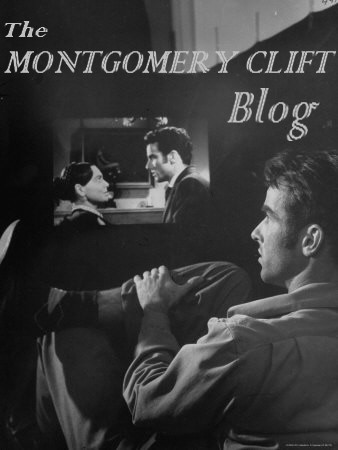




































.-+albornoz+(4)+BLOG.jpg)
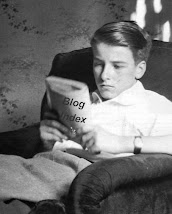
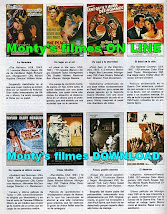


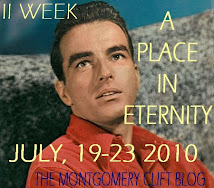










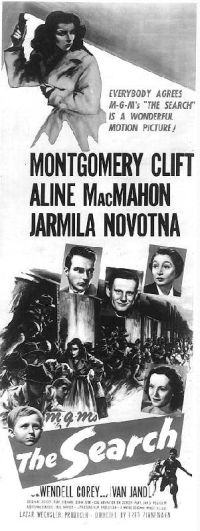

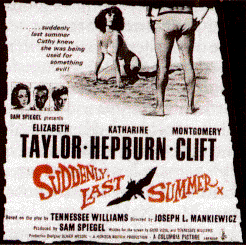


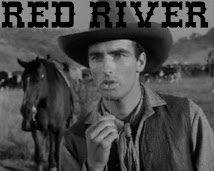
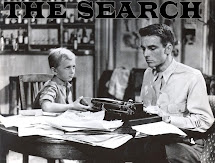

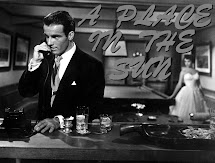2.jpg)
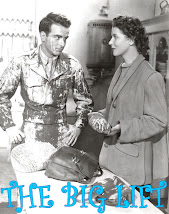.jpg)
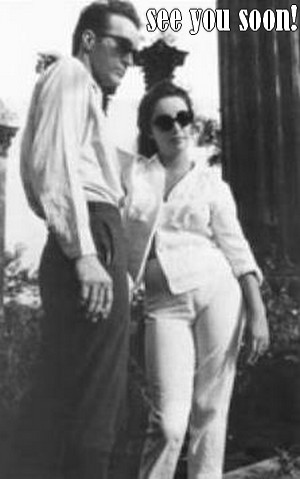

.jpg)

